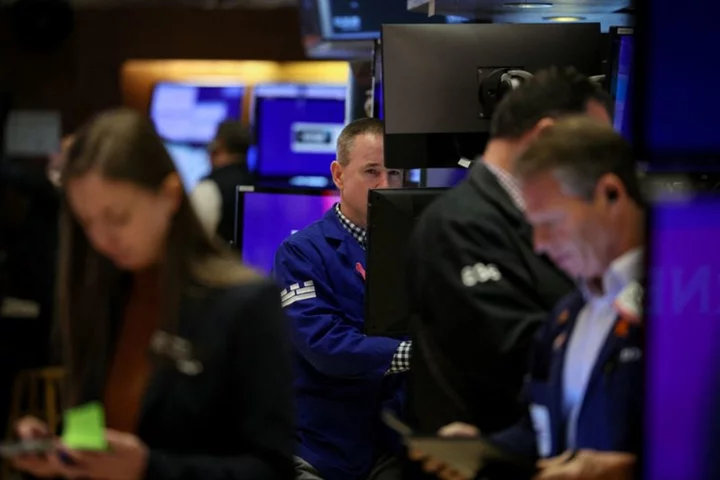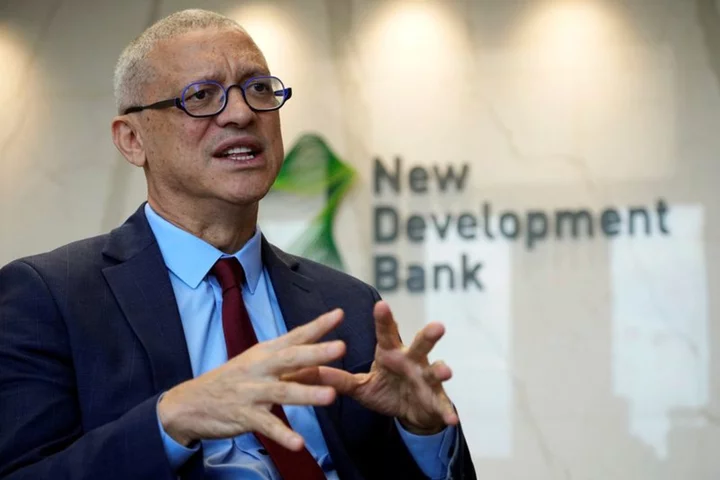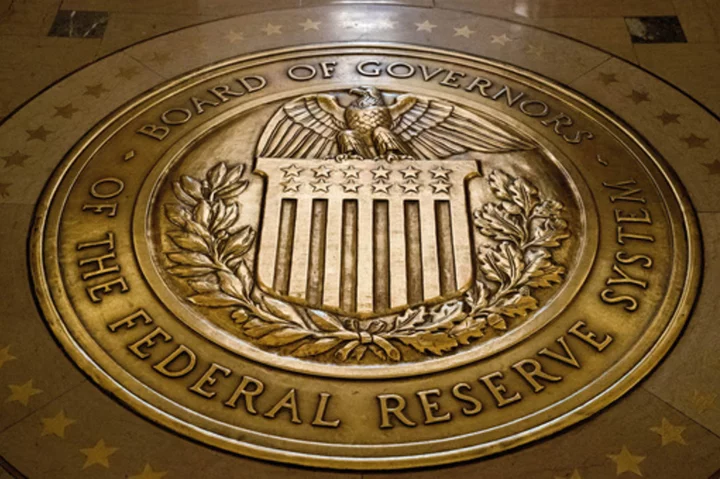By Jamie McGeever
ORLANDO, Florida After 18 months of relentlessly rising borrowing costs, the U.S. economy is accelerating again, begging the question about when or if tightening financial conditions can slow the momentum.
After 525 basis points of interest rate hikes, financial conditions are now the tightest in a year, and biting. This is what the Fed wants, it just doesn't want the teeth of costlier money to sink too deeply into the real economy for fear its other mandate of maximum employment comes unstuck.
The main cause of those squeezed conditions is renewed asset price losses. Treasury bond yields are the highest since 2006-07 at 5% or higher and Wall Street stocks have fallen some 10% in three months, with high yield credit spreads finally widening.
JPMorgan strategists estimate that the impact on GDP from tightening financial conditions takes anywhere from one to two years to be felt. It may be well into next year before the full effects of the 2022-23 tightening shows up in the real economy.
But warning signs are already flashing.
The renewed weakness of U.S. regional bank shares is one of them. All but a few dozen of the 4,000-plus banks in the US are 'small' or 'medium-sized', and they are critical to local business and employment.
There are some 33 million small businesses in the U.S., and they account for around 40% of all jobs nationwide. Their ties to small and regional banks could not be stronger.
Goldman Sachs research earlier this year showed that almost 70% of small firms' commercial and industrial loans are from banks with less than $250 billion in assets, and 30% from banks with less than $10 billion in assets.
The KBW regional banking index on Tuesday hit a five-month low, it is down 20% since late July, and is back near the lows plumbed in the aftermath of the March regional bank shock.
Financial pain for these banks means credit for their individual and corporate customers will probably be in shorter supply and more expensive.
Figures from the National Federation of Independent Business show that small businesses paid an average interest rate of almost 10% on their short-term borrowings in September, the highest since December 2006.
October's near-certain increase will take it to the highest since February 2001, and history shows that when small firms' borrowing costs reach these levels, recession usually follows.
"Fed policy is working as the textbook would have predicted, and companies are facing higher costs of capital," Apollo Global Management's Torsten Slok wrote on Monday. "The outcome is lower (capital expenditure) spending and lower hiring."
HOPE FOR THE BEST
The tightening of financial conditions in recent months, a period in which the Fed has only raised the policy rate by 25 basis points, has been extraordinary.
Since mid-July they have tightened by around 125 basis points, according to Goldman Sachs, of which around 50 basis points is attributed to lower stock prices and a similar amount to higher long-dated bond yields.
Analysts at Morgan Stanley estimate conditions have tightened by around 75 bps since the Fed's pause in September, much of that from the explosion in bond yields.
BNP Paribas analysts reckon the impact on GDP growth from tighter financial conditions recently equates to a 40 basis point rate hike. Around a third of the bank's financial conditions index rise since April is from higher bond yields.
This is important because yields drive consumer and business lending rates, and mortgage rates, which are nudging 8% for the first time in more than 20 years.
Existing home sales are rising at their slowest rate since 2010, mortgage applications have slumped to levels last seen in the mid-1990s, affordability has collapsed, and prices in many areas are starting to head south.
BNP Paribas economists say the full effects of the Fed's tightening have yet to play out. "Our base case is still an economic recession in 2024. A mild one relative to history, but a downturn nonetheless," they wrote last week.
To be sure, the economy still seems to be humming along nicely. Broad measures of the labor market and consumer spending continue to smash forecasts, and GDP growth is much stronger than most observers had expected.
Financial conditions were this tight a year ago, and yet real annualized growth in the second quarter was 2% and probably topped 5% in the third quarter. As with the inverted yield curve, is it really different this time?
We may soon find out.
Several Fed officials, including Chair Jerome Powell, were on the stump this month and all specifically mentioned or alluded to tighter financial conditions cooling the economy rather than further rate hikes.
They're now essentially sitting back and hoping for the best.
(The opinions expressed here are those of the author, a columnist for Reuters.)
(By Jamie McGeever; Editing by Andrea Ricci)









